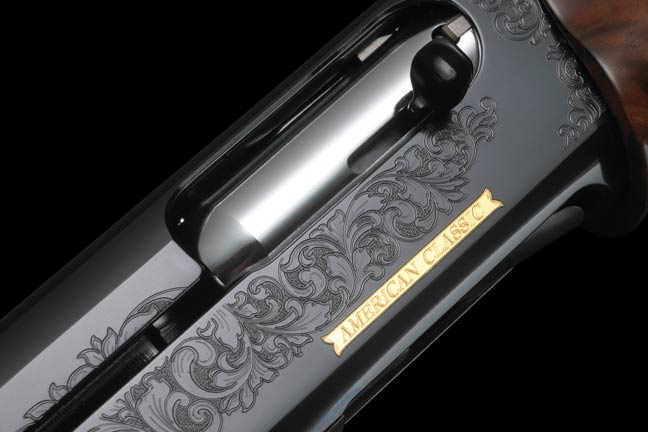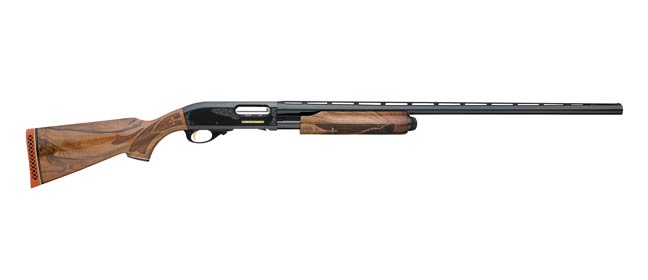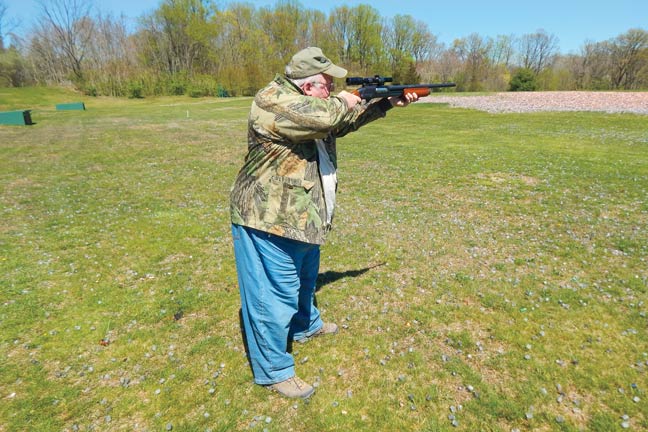Remington has long been a U.S. leader in firearms. Big Green turns 200 this year, and though I'm not quite that old (yet), their guns have played a significant role in my hunting career, and probably yours too.
Mostly we deal with shotguns on these pages, but I'd be remiss if I didn't mention that my first real deer rifle was a Remington 760, slide action chambered in .270. It was deadly accurate and regularly stood up to northern Pennsylvania's brutal winters.

Remington's .22-250 700 Varmint rifle taught me about genuine accuracy; it was the real deal in that department. But of course, here at GUN DOG we are wingshooters first. Old-school football and wrestling coaches taught me that repetition was mandatory for success; wingshooting is certainly an athletic endeavor. Repetition, muscle memory and hand-eye coordination are the basics.
I took up shooting clay targets, mostly trap and a little skeet, to more speedily ratchet up my shooting skills.
Southeast Pennsylvania had wild ringnecks during my early hunting years. It was perfect for a young guy with birdy English springer spaniels. Later, ruffed grouse fulfilled my wingshooting desires and drove my interest in good shotguns.
After a year with a clunker, I was able to afford a gently used 12-gauge Remington 870 pump with a short barrel and improved cylinder choke. It was a good start.
Our region's small farms and woodlots made that 870 perfect for roosters. The Remington's modest weight, smooth action and open choke provided the perfect answer for the fast-rising birds. In time I even handled grouse capably with the 870.
The iconic 870 was introduced in 1951 in 12-, 16- and 20-gauge. Eventually all other gauges, and one bore, were included in the 870 lineup. This strong, smooth-operating shotgun has been used for clays to wild game and tactical endeavors. You name it and a Remington 870 has been made to suit it.

Over 12 million Remington 870s have been manufactured, more than any other pump shotgun in the world.
Just as serviceable as the classy 870 Wingmaster, the later introduced Express takes on the toughest jobs in swamps, rainy days and filthy blinds, briar infested grouse coverts and night-time varmint hunting. The Express model exhibits a bit less physical refinement than the Wingmaster while maintaining its reliability and outstanding handling qualities at a lower cost.
Occasionally, I stuck a 4-power scope on the short-barreled, open choked 870 to hunt deer on regional conservation properties in specially regulated shotgun-only areas. Participants often must qualify to take part in such hunts. With my scope-mounted 870 the score requirements were easily achieved.
I now have a number of specialty shotguns but my old 870 turned out to be a great all-around performer. That 870 has been semi-retired from the field for a while; it handled every job I gave it. It now serves as my self-defense firearm at home, as well as in some of the more out of the way places we hunters tend to wander.
Two other Remington smoothbores entered my life; both model 1100 semi-automatics. The first was a short-barreled gun I used for a while for skeet and the other was purchased later for trapshooting and bird hunting.
The 1100 was so popular that after a good run Remington replaced it with a new model. Wingshooters from many venues let themselves be heard — really let themselves be heard — and the 1100 was returned to the Remington lineup and remains there still. It is one of the most successful semi-autos ever. The 1100 is similar to the 870 in that it handles easily in most situations and was made in nearly every configuration possible.

Clays can be shot by the hundreds and recoil sometimes becomes an issue. The Remington 1100's gas-operated action lowers recoil significantly, while at the same time operating consistently well. A malfunctioning 1100 nearly always means the owner has let his gun get dirty. The shame of the situation is the gun is easily disassembled for cleaning.
I have done some instruction and found for young children a 28-gauge 1100 is a great starter gun. But always remember, load only one shell at a time for beginners of any age.
Mid-to-older teens do well with a 20-gauge 1100, as do women. At 6½-pounds for the 20-gauge 1100 and 6¼-pounds for a 28-gauge 1100, these particular Remingtons are fun to shoot. Reading and re-reading this piece prior to sending it to the editor has caused some real dilemmas. Certainly I cannot currently afford both a 28- and a 20-gauge 1100. How do I decide which to choose?
And finally, why in the heck did I ever sell that "one ragged hole" .22-250 Varminter? Can I correct that?






